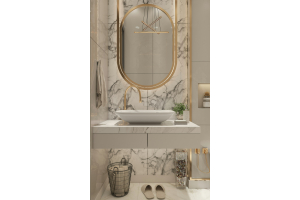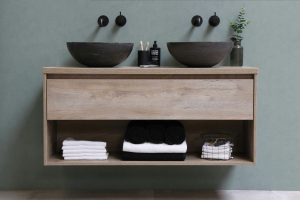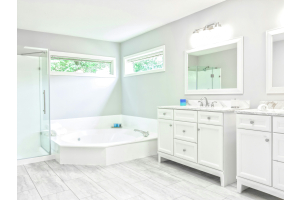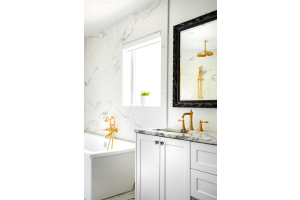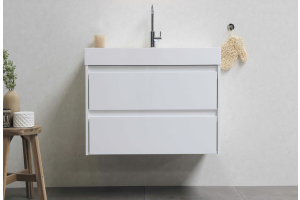Wood panels were the most affordable, chic upgrade back in the 1970s, which explains why almost every house had them! Some homeowners later upgraded to modern wood wall panels–but many folks still have those old-school wood panels installed.
If you’ve got those and are ready for an upgrade, this guide is for you. We’ll walk you through removing those wood panels step by step and show you how you can revamp your home’s look for less than $100. Let’s get started!
Things You’ll Need
Before you begin with this DIY project, you’ll need:
- Dust mask
- Sandpaper (medium and fine grit)
- Dust brush
- Ply bar or crowbar
- Hammer
- Nail punch
- Utility knife
- Putty knife
- Joint compound
- Drywall primer
- Paint
- Paint rollers and brushes
Steps for Removing Wood Paneling From Walls
Once you have all the tools on hand, follow these steps.
Step 1: Secure the Floor
Removing wood panels is going to be a messy process. So, remove all small items from the room and cover your furniture and floor with plastic sheets.
We also recommend securing plastic sheets with tapes or clips, especially if you’re working with multiple helpers.
Step 2: Start Removing the Paneling With a Ply Bar
Now, use a ply bar to remove the wood panels one by one. Here’s how to do it:
- Locate edges: Start the process at a corner or an insignificant spot. Try to find an edge of the wood paneling that feels loose or weak. Then, gently use a utility knife to create a small gap (or cut) between the panel and the wall.
- Insert the ply bar: Next, carefully insert the ply bar or crowbar into the gap you’ve located. Use a hammer to gently tap the bar to create enough space to get leverage.
- Apply pressure: Once the ply bar is wedged in, apply steady and even pressure to pry the wood paneling away from the wall. Work your way along the edges and gradually loosen all the panels from the wall. It’s going to take significant effort, so stay patient and take ample breaks. Also, avoid using excessive force to prevent damaging the drywall.
Step 3: Patch Holes
Once you’ve removed all the wood panels, inspect the wall. Remove nails or staples using a nail punch and hammer. Look for nail holes or any damage to the drywall underneath.
If you locate any holes, apply a small amount of joint compound using a putty knife. Smoothen it and let it dry as per the manufacturer's instructions. Next, sand the patched areas with a fine-grit sandpaper until they are smooth and level with the surrounding wall.
Step 4: Sand the wall
Next, it’s time to even the entire wall surface. Use a medium-grit sandpaper to gently sand the wall. This will remove any remaining adhesive residue, rough spots, or imperfections left from the wood paneling removal process.
Finish off the sanding process by wiping away the dust using a dust brush. Make sure you have your dust mask on.
Also, note that this step is essential for a polished look. A smooth and clean surface ensures proper adhesion of primer and paint.
Step 5: Apply Primer
If you want to paint the wall instead of upgrading to modern-looking wood panels, it’s time to apply a primer. Consider a primer with stain-blocking properties if the wood paneling left visible marks or any sort of discoloration on the wall.
Begin the process by pouring a small amount of primer into a paint tray. Dip a paint roller and start applying the primer to the wall in vertical strokes.
We also recommend dividing the wall into manageable sections. Make sure you take a break between each section and assess (from a distance) that the entire surface is covered with a thin, even layer of primer. Be careful not to leave visible streaks or drips.
Step 6: Paint the Wall
Lastly, choose a paint color that complements your room's ambiance. Consider using a paint with a satin or semi-gloss finish for easy cleaning and durability.
Now, start painting the primed wall. First, stir the paint thoroughly and pour it into a clean paint tray.
Dip a clean paint roller into the paint and start painting the wall in vertical or horizontal strokes (choose one and stick to it). Again, it’s a good idea to divide the wall into manageable sections to make things easier.
We also recommend overlapping each stroke slightly for consistent coverage. For edges and corners, you might want to use a paintbrush. Finally, allow the first coat of paint to dry completely and then apply a second coat if needed.
Of course, if you’d rather re-paint your wood panels instead of removing them, don’t miss our posts on how to paint wood wall panels or how to make wood panel walls look good!

